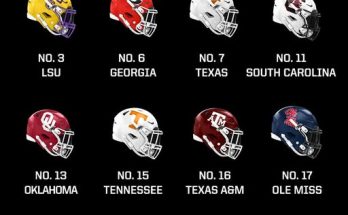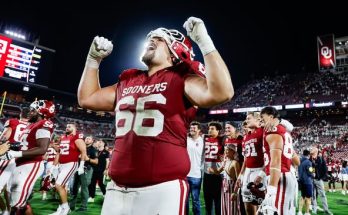The South Carolina Gamecocks football program has been one of the more exciting and intriguing teams in the SEC in recent years. Head coach Shane Beamer, now entering his third year at the helm of the program, has made significant strides in rebuilding and reestablishing South Carolina as a competitive force in college football. Under his leadership, the Gamecocks have shown resilience, innovation, and a commitment to playing tough, hard-nosed football.
As the team heads into the 2025 season, many eyes are on Beamer and his program, eager to see how the Gamecocks will build on their momentum and continue to improve. A crucial aspect of this offseason is the annual spring game, which serves as an exhibition where coaches, players, and fans can get an early glimpse of what’s to come in the upcoming season.
Traditionally, spring games are a major event for many college football programs, often televised for fans across the nation to see the newest talents, the team’s progress, and the overall state of the program. However, this year, South Carolina made the surprising decision not to televise their spring game, a move that raised eyebrows among fans and media members alike. For a program that has steadily grown in visibility under Beamer’s leadership, the decision to not televise the event has sparked curiosity, speculation, and questions about the program’s future.
In this article, we’ll dive into why South Carolina is opting not to televise their spring game this year, explore the potential implications of this decision, and offer insight into Beamer’s reasoning behind it.
Shane Beamer’s Vision for South Carolina Football
Before examining the specific reasons behind the decision to not televise the spring game, it’s important to first understand Shane Beamer’s overarching vision for South Carolina football. When Beamer took over the program in 2021, his goal was to restore the Gamecocks to prominence in the highly competitive SEC. He inherited a program that had seen its fair share of ups and downs, and one that needed a significant cultural shift.
Beamer’s first season was a solid foundation-building year, and while it wasn’t a breakout campaign, he showed a commitment to developing the team in all aspects, from player development to recruiting. In year two, the program showed growth, with South Carolina pulling off several notable victories and providing fans with hope for the future. Throughout his time as head coach, Beamer has stressed the importance of cultivating a team-first mentality and focusing on the fundamentals of the game.
Under Beamer’s leadership, South Carolina has adopted a blue-collar approach to football—emphasizing hard work, discipline, and perseverance. Beamer is a coach who values the internal development of players, rather than putting too much stock in flashy displays of talent or media attention. This philosophy has not only helped bring in promising recruits but has also cultivated a sense of identity for the program, which is becoming more ingrained in the culture of South Carolina football.
With all of this in mind, it makes sense that Beamer would want to approach the spring game in a way that aligns with his overall philosophy. In an era where college football programs often feel the pressure to perform on the biggest stages at all times, Beamer’s decision to scale back the traditional hype surrounding the spring game fits with his coaching style. He has consistently expressed the importance of focusing on the work that happens behind the scenes, and this year’s spring game decision speaks to that same mindset.
The Logistics of Televising a Spring Game
The spring game is typically an important event on a program’s calendar, and many schools do, in fact, televise it or offer a live stream for fans to watch. However, televising a spring game comes with its own set of logistical and financial considerations. For a program like South Carolina, which is in the midst of rebuilding and looking for ways to make meaningful strides toward the upper echelon of the SEC, the question of whether to televise the spring game isn’t as simple as just opening up a broadcast window.
When a game is televised, especially on a major network or cable sports channel, it often comes with a significant financial commitment. This includes broadcast rights agreements, equipment costs, and the logistics of setting up cameras, announcers, and crew members to cover the event. For teams that want to provide a high-quality viewing experience for fans, this can be a substantial investment. Additionally, there’s the question of production time and resources, as these spring games are often filmed and broadcast at a cost to the program.
Another factor that plays into the decision is the potential disruption to team preparation. The presence of cameras, media personnel, and a production crew can create distractions for players and coaches who are still in the midst of fine-tuning their teams and focusing on development. Coaches like Shane Beamer tend to prioritize getting their players ready for the upcoming season, rather than putting too much emphasis on public exposure. For Beamer, the focus has always been on improving his roster, so the potential disruptions that accompany a televised event might not align with his immediate goals for the team.
While some may argue that televising the spring game is an important tool for building fan engagement and attracting new recruits, Beamer’s decision likely reflects his priority on improving his program from the inside out. The atmosphere at the Gamecock’s spring game will still be electric, but it won’t be clouded by the added pressure of a televised broadcast.
Beamer’s Focus on Player Development
For Beamer and his staff, the spring game serves as a valuable opportunity to evaluate players in a game-like scenario. It’s a chance to assess talent, identify potential starting positions, and fine-tune the schemes that will shape the upcoming season. However, this process is often focused on internal development and team-building, rather than creating a spectacle for the public eye.
One of the biggest aspects of Shane Beamer’s coaching philosophy is that he believes in the importance of keeping things low-key during the spring period. His focus remains firmly on team development and individual player progress, rather than trying to entertain a large audience. Spring football is a time to evaluate depth charts, test new schemes, and provide young players with a chance to prove themselves in a live setting, all while avoiding the pressure that comes with the spotlight of a televised event.
By not televising the spring game, Beamer is able to ensure that the focus remains on fundamental football rather than the entertainment factor. He can run practices, drills, and intra-squad scrimmages that truly reflect the team’s readiness for the upcoming season, without having to worry about how the public or the media is perceiving the players’ performances. This, in turn, allows his staff to make evaluations that are purely football-focused and not influenced by the external pressure of how the game is being broadcast.
Fan Engagement: The Decision to Prioritize Experience Over Visibility
One of the common arguments in favor of televising a spring game is the potential for fan engagement. Television exposure helps programs reach new fans, boosts visibility, and increases engagement with alumni, boosters, and general supporters. Fans are able to see their teams in action and get excited for the season ahead. However, Beamer’s decision to opt out of televising the game speaks to his belief in the importance of creating a more intimate and authentic experience for fans who attend the event in person.
Rather than focusing on broadcast reach, Beamer’s decision shifts the emphasis to a more personal fan experience. The Gamecocks’ spring game will still take place, but fans who attend will be able to enjoy an experience that feels more connected to the team itself. The players will have an opportunity to play in front of their loyal supporters without the added distraction of national broadcasts, cameras, and commentators.
By keeping the event off television, Beamer also avoids putting unnecessary pressure on his team. The focus shifts away from the external hype and returns to the core values of player development and internal program-building. For Beamer, this decision shows his commitment to doing things the right way, even if it means sacrificing some of the more glamorous aspects of college football, such as widespread television exposure.
The Bigger Picture: What Does This Mean for the Future of South Carolina Football?
The decision not to televise the spring game this year shouldn’t be seen as a sign of weakness or a lack of interest in fan engagement. Rather, it reflects Shane Beamer’s long-term vision for South Carolina football. Beamer has made it clear that he is committed to building a strong, sustainable program that prioritizes development, discipline, and hard work. By not televising the spring game, Beamer is reinforcing that message and ensuring that the program remains grounded in its focus on the future.
This decision could also be a sign of Beamer’s growing confidence in his ability to establish a program that can stand on its own. With the team steadily improving year after year, there is less of a need for the added spotlight that often comes with television broadcasts. The focus is on team chemistry, internal growth, and preparing for the season ahead.
South Carolina football is headed in the right direction, and this decision to keep things low-key for the spring game is just another indication of how Beamer plans to continue building his program the right way.



